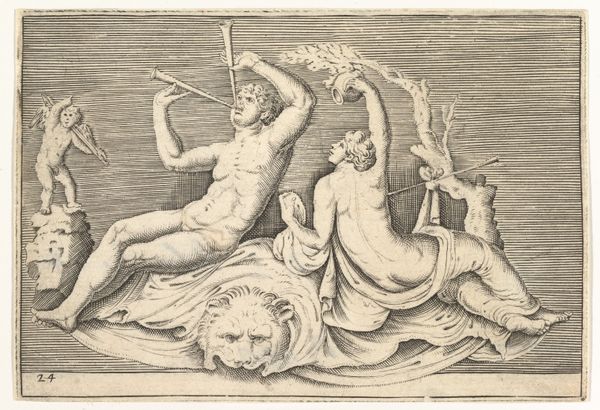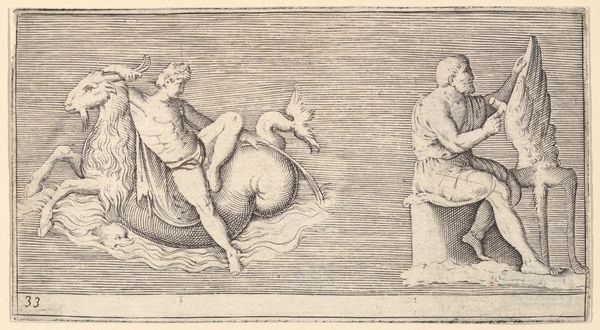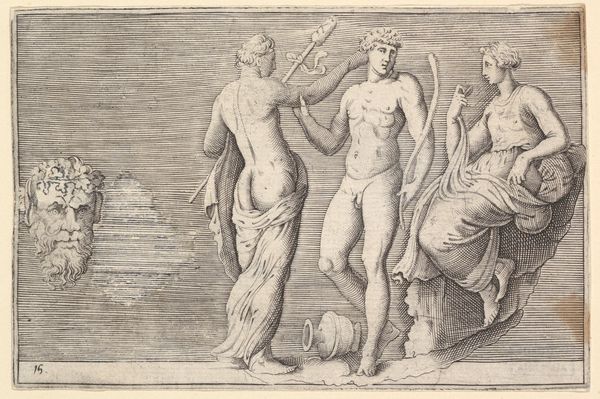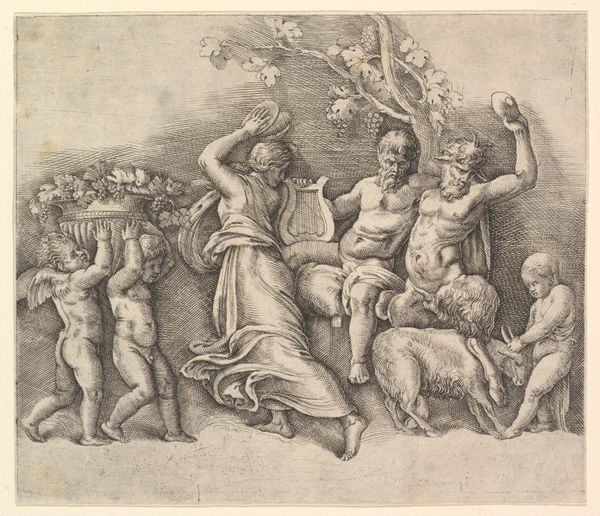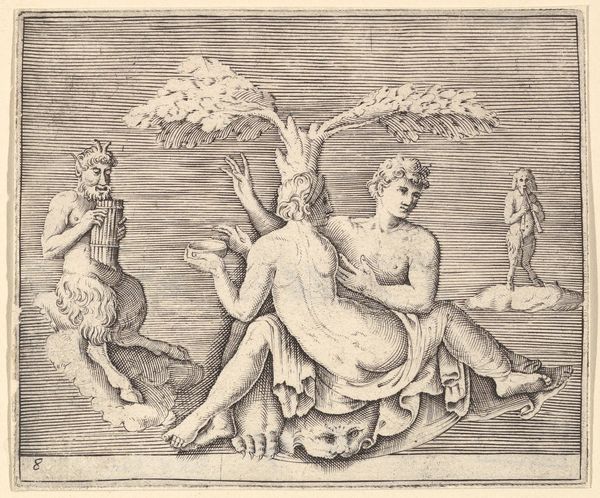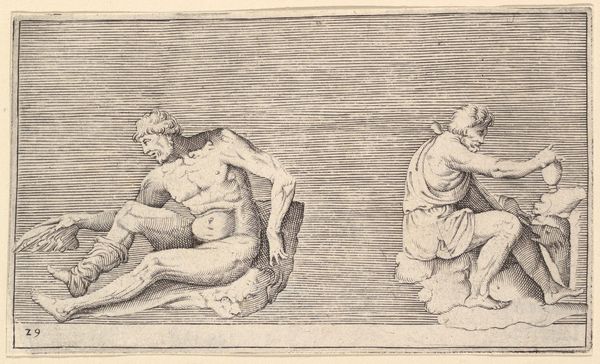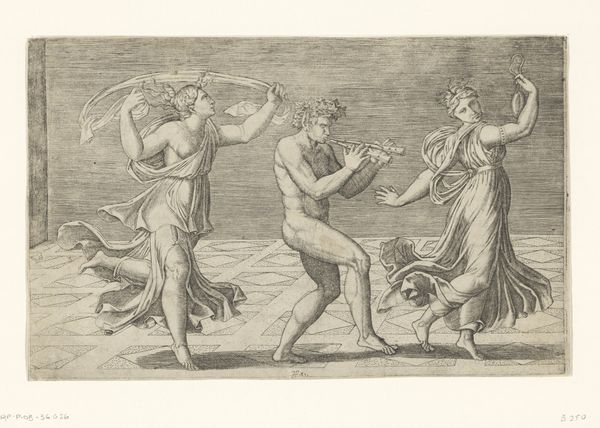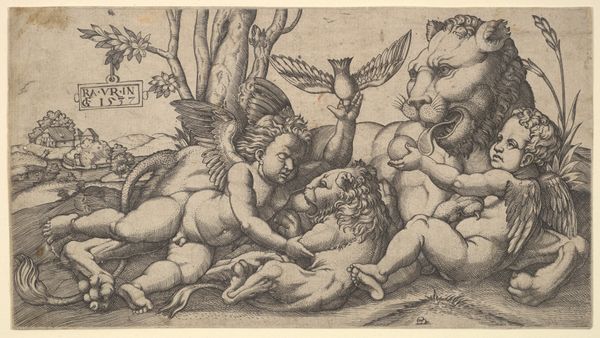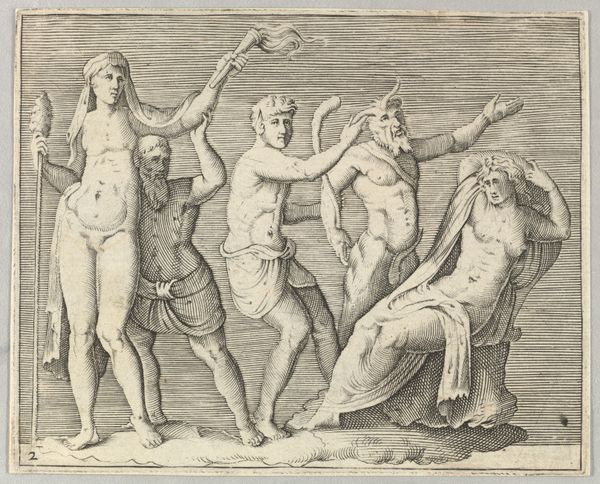
Woman and Man Seated on Lionskin, Man Pouring Wine, from "Ex Antiquis Cameorum et Gemmae Delineata/ Liber Secundus/et ab Enea Vico Parmen Incis" 1599 - 1622
0:00
0:00
drawing, print, ink, engraving
#
drawing
#
allegory
#
pen drawing
# print
#
ink
#
ancient-mediterranean
#
nude
#
engraving
Dimensions: plate: 3 7/16 x 4 7/8 in. (8.8 x 12.4 cm)
Copyright: Public Domain
Editor: Here we have an engraving from between 1599 and 1622, titled "Woman and Man Seated on Lionskin, Man Pouring Wine". I find the lines really striking, creating an almost sculptural feel, especially in the draping of the figures' garments. What do you see in this work? Curator: Well, focusing on the material reality of this piece, I'm particularly interested in the "how" and "why" of its creation. The artist meticulously used engraving techniques to reproduce classical imagery, speaking to the means of production itself. Who was commissioning these prints? Were they attempting to emulate luxury items available only to elite patrons? Editor: That's an interesting point about emulation. I was focusing on the allegory, the classical themes... Curator: And those are important, but let's dig deeper. Consider the socioeconomic context. Prints like this democratized access to classical art but also replicated existing power structures through patronage and consumption. What material realities shaped the production and distribution of such imagery? Editor: So, instead of seeing it purely as an artistic endeavor, we should consider it a product shaped by labor and access? Curator: Precisely! Think about the tools, the workshops, the systems of patronage that facilitated this very specific type of visual culture. How does this process of replication transform the meaning of the original subject? Editor: I see what you mean. It changes my perspective. The skill isn't just aesthetic; it's a part of a broader economic and social landscape. Curator: Exactly. It becomes less about an idealized past and more about the tangible reality of artistic production in the present, a commentary on materiality and artistic processes. Editor: That definitely provides a different lens through which to view this piece. I’ll never look at prints the same way.
Comments
No comments
Be the first to comment and join the conversation on the ultimate creative platform.

